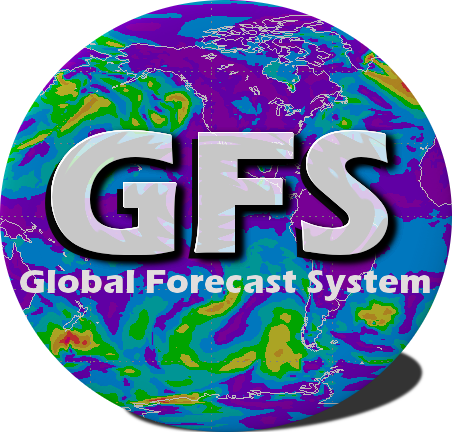
NCEP GFS 0.25 Degree Global Forecast Auxiliary Grids Historical Archive
d084003
| DOI: 10.5065/D6W09402
Abstract:
The NCEP operational Global Forecast System auxiliary analysis and forecast grids are on a 0.25 by 0.25 global latitude longitude grid. Grids include analysis and forecast time steps at a 3 hourly interval from 0 to 240, and a 12 hourly interval from 240 to 384. Model forecast runs occur at 00, 06, 12, and 18 UTC daily. For real-time data access please use the NCEP data server.
Temporal Range:
2015-02-01 00:00 +0000 to 2025-05-11 12:00 +0000
(Entire dataset)
Period details by dataset product
Period details by dataset product
2015-02-01 00:00 +0000 to 2016-01-16 18:00 +0000 (NCEP GFS 0.25 Degree Auxiliary Analysis and Forecast Grids for 2015)
2016-01-01 00:00 +0000 to 2017-01-16 18:00 +0000 (NCEP GFS 0.25 Degree Auxiliary Analysis and Forecast Grids for 2016)
2017-01-01 00:00 +0000 to 2018-01-16 18:00 +0000 (NCEP GFS 0.25 Degree Auxiliary Analysis and Forecast Grids for 2017)
2018-01-01 00:00 +0000 to 2019-01-16 18:00 +0000 (NCEP GFS 0.25 Degree Auxiliary Analysis and Forecast Grids for 2018)
2019-01-01 00:00 +0000 to 2020-01-16 18:00 +0000 (NCEP GFS 0.25 Degree Auxiliary Analysis and Forecast Grids for 2019)
2020-01-01 00:00 +0000 to 2021-01-16 18:00 +0000 (NCEP GFS 0.25 Degree Auxiliary Analysis and Forecast Grids for 2020)
2021-01-01 00:00 +0000 to 2022-01-16 18:00 +0000 (NCEP GFS 0.25 Degree Auxiliary Analysis and Forecast Grids for 2021)
2022-01-01 00:00 +0000 to 2023-01-16 18:00 +0000 (NCEP GFS 0.25 Degree Auxiliary Analysis and Forecast Grids for 2022)
2023-01-01 00:00 +0000 to 2024-01-16 18:00 +0000 (NCEP GFS 0.25 Degree Auxiliary Analysis and Forecast Grids for 2023)
2024-01-01 00:00 +0000 to 2025-01-16 18:00 +0000 (NCEP GFS 0.25 Degree Auxiliary Analysis and Forecast Grids for 2024)
2025-01-01 00:00 +0000 to 2025-05-11 12:00 +0000 (NCEP GFS 0.25 Degree Auxiliary Analysis and Forecast Grids for 2025)
Updates:
Daily
Variables:
Vertical Levels:
See the detailed metadata for level information.
Data Types:
Grid
Spatial Coverage:
Longitude Range: Westernmost=180W Easternmost=180E
Latitude Range: Southernmost=90S Northernmost=90N Detailed coverage information Detailed coverage information 0.25° x 0.25° from 0E to 359.75E and 90N to 90S (1440 x 721 Longitude/Latitude)
Latitude Range: Southernmost=90S Northernmost=90N Detailed coverage information Detailed coverage information 0.25° x 0.25° from 0E to 359.75E and 90N to 90S (1440 x 721 Longitude/Latitude)
Data Contributors:
DOC/NOAA/NWS/NCEP
National Centers for Environmental Prediction, National Weather Service, NOAA, U.S. Department of Commerce
Related Resources:
Total Volume:
284.98 TB
Data Formats:
Related RDA Datasets:
-
NCEP FNL Operational Model Global Tropospheric Analyses, continuing from July 1999
-
NCEP GDAS/FNL 0.25 Degree Global Tropospheric Analyses and Forecast Grids
-
NCEP GFS 0.25 Degree Global Forecast Grids Historical Archive
-
NCEP GDAS/FNL Global Surface Flux Grids
-
Historical Unidata Internet Data Distribution (IDD) Gridded Model Data
More Details:
View a more detailed summary of the data, including specific date ranges and locations by parameter
Metadata Record:
Data License:
 This work is licensed under a Creative Commons Attribution 4.0 International License.
This work is licensed under a Creative Commons Attribution 4.0 International License.
Citation counts are compiled through information provided by publicly-accessible APIs according to the guidelines developed through the https://makedatacount.org/ project. If journals do not provide citation information to these publicly-accessible services, then this citation information will not be included in RDA citation counts. Additionally citations that include dataset DOIs are the only types included in these counts, so legacy citations without DOIs, references found in publication acknowledgements, or references to a related publication that describes a dataset will not be included in these counts.